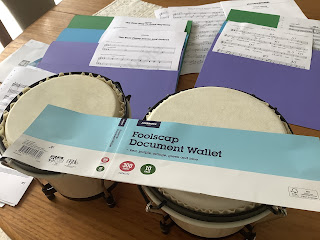Answers to Questions About Rhythm, Melody and Harmony.
Check this link. Some great info.
https://www.jazzguitarlessons.net/blog/the-ultimate-no-nonsense-guide-to-jazz-harmony
Jazz harmony is defined as the theory behind jazz chords, and the ultimate practice of how jazz chords are put to use in the context of jazz music. Since American jazz music resembles, in analysis, other practices of Western harmony (i.e. classical music), jazz harmony and theory relies heavily on similar concepts such as scales for the foundation of chord construction.
This page hosts straight-to-the-point answers to common questions about jazz chords, jazz chord progressions and harmony in general. No frills. Just plain and simple explanations of how chords work together and why. Ever wondered about “two five’s” (ii-V), cycling, cadences and interpolation? Then read on!
While learning about jazz harmony here, some questions may arise. It’s ok! They are most likely answered somewhere on this very same page. If not, please contact me.
Table of Contents
Jazz Chords Part I
- What is a II-V-I ?
- What is a II-V ?
- What’s the difference between “major two five” and “minor two five” ?
- How does the II-V-I actually work ?
- What is a cadence ?
- What is an “unresolved cadence” ?
- Why use roman numerals ?
Part II
- What is a secondary dominant ?
- What is “ii-V interpolation” ?
- What is Back Cycling ?
- What is I-VI-II-V ?
- What is a turnaround ?
Part III
- What is a tag ?
- What is a back door progression ?
- What are “chord tones” and “guide tones” ?
- What are chord extensions ?
- What is an altered dominant ?
- What is an inversion ?
=====================================================================
Music 101: What Is Harmony and How Is It Used in Music?
Written by the MasterClass staff
Last updated: May 5, 2021 • 6 min read
Music consists of three main elements—melody, rhythm, and harmony. While the first two are typically accountable for making a piece of music memorable—think of the opening motif of Beethoven’s Symphony No. 5, or Timbaland’s synth lick on the Jay-Z song “Dirt Off Your Shoulder”—it’s the third element, harmony, that can elevate a piece from common and predictable to challenging and sophisticated.
Written by the MasterClass staff
Last updated: May 5, 2021 • 6 min read
Music consists of three main elements—melody, rhythm, and harmony. While the first two are typically accountable for making a piece of music memorable—think of the opening motif of Beethoven’s Symphony No. 5, or Timbaland’s synth lick on the Jay-Z song “Dirt Off Your Shoulder”—it’s the third element, harmony, that can elevate a piece from common and predictable to challenging and sophisticated.

Comments
Post a Comment